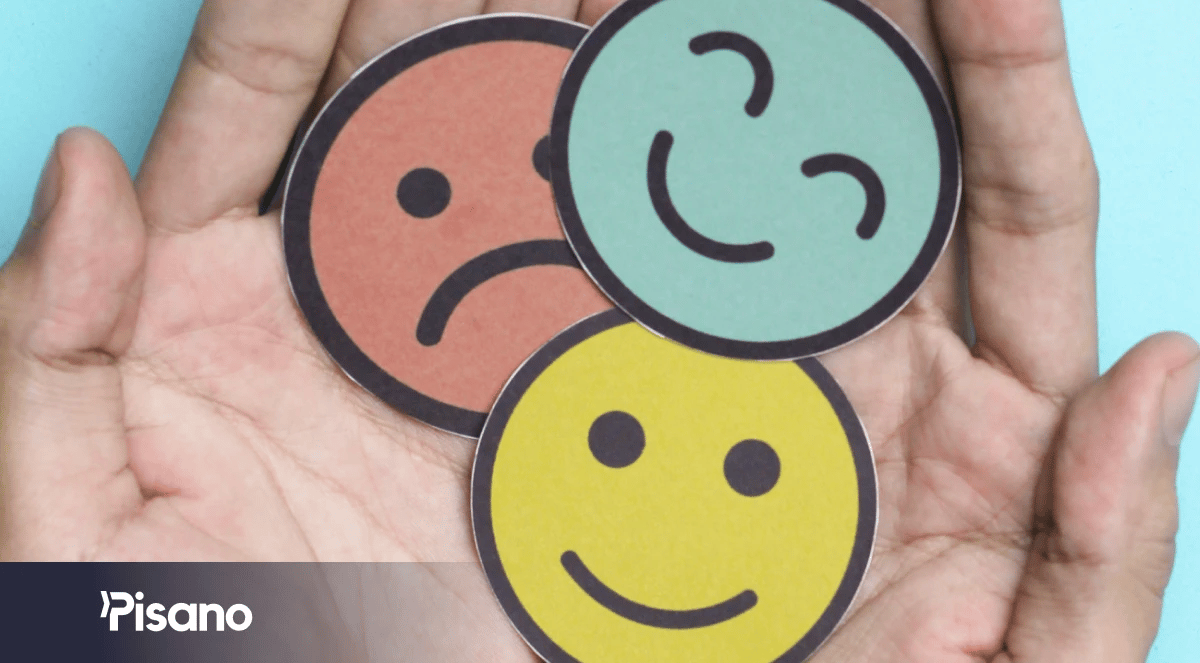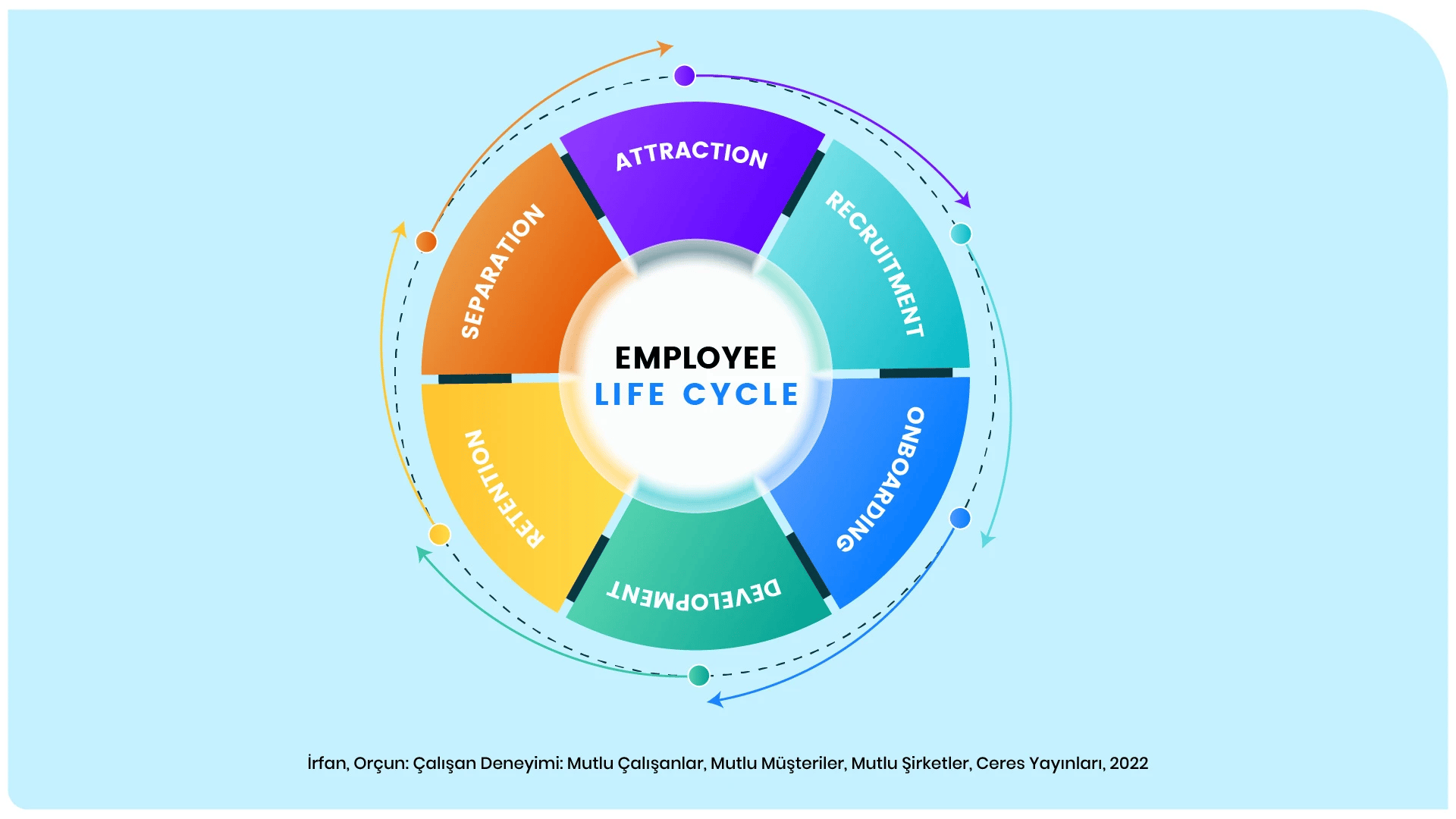How would you define experience?
It is a concept that is easy to perceive mentally but difficult to put into words cognitively.
It is possible to interpret the experience as the process of freezing a single moment of the flowing life, just like in a photograph, and transforming it into a memory encapsulated with the emotions and thoughts felt in the process.
I would like to give a reference to the definition I made in my book Employee Experience: Happy Employees, Happy Customers, Happy Companies which was published by Ceres Publications in 2022 so that we can better frame it.
“Experience is the transformation of the emotions we feel during an event that we have experienced in such a way that it would shape our thoughts afterwards and turn into a memory.”
Effective Factors in the Rise of the Experience
I think that 3 factors are effective in the rise of the experience and its being one of the agendas that entered our lives, especially with the pandemic.
As we mentioned in our previous articles, the first of these factors is the difference in the expectations and needs of the younger generations. To explain a little more, there are serious differences between the younger generations compared to the generations that came before them both in terms of their perspectives on life and their expectations from life.
If you think that according to the reports, it is expected that the Y generation will make up 75% of the workforce composition in 2025 and the Z generation will make up the remaining 25%, I suggest you pay attention to the expectations and needs of the younger generations.
For example, they care about having personalized experiences rather than money, titles and status. According to Gökhan Kara, traveling around the world with backpacks rather than working for a company for years and gaining job security is more appealing for the younger generations.
It is also possible to say that the younger generations are much more comfortable and generous in sharing their thoughts and experiences with others compared to previous generations.
According to research, 38% of Generation Z spends an average of 4 hours a day on social media. Only 18% of all other generations combined can keep up with this time spent on social media.
It's not just the younger generations who spend time connected to the digital world, though, in today's online world. Studies show that the average person today spends ¾ of their waking time connected to the internet. So, even if we don't share, it is interesting for all of us to follow the posts.
I think the second factor is technological development. Young generations, also called digital natives, who were born into technology, have an important wealth of channels and tools that will allow them to share their way of living and how they interpret the life they live with others.

The last factor is naturally the pandemic. The hybrid working models with flexible time and flexible location which were once interpreted as almost a taboo and believed not possible until the pandemic turned out to be very real and possible once the pandemic hit. In this sense, it is possible to interpret the pandemic as a powerful catalyst that accelerates this chemical reaction.
But what does all this have to do with working life? Studies show that an adult works an average of 90,000 hours in their lifetime. The only activity we spend more time doing in our life than working is sleep.
Therefore, in this life where we fill a big piggy bank of memories with the experiences we collect from social life, family life and working life, the field in which we accumulate the most is naturally working life.
Which brings us to what the employee experience is. Here's how I define what employee experience is in my book.
“Employee experience is the holistic perception that an employee acquires as a result of his interactions with his organization.”
But where and how does the employee interact with his organization? We call the instances where the employee interacts with the organization as touch points. Touch points span many human resources processes within a model we call the employee lifecycle, which allows us to track and manage the career time of an employee in an organization by dividing it into phases.

We can interpret every moment as a touch point when the employee benefits from the products or services offered by the organization such as using the personnel service, changing in the dressing room, starting to work in the office or production area, eating in the cafeteria, drinking tea in the rest area, performance meeting, feedback meeting.
Considering that each contact, and therefore each interaction, creates an expectation, the extent to which the experience at the relevant contact point meets the expectation also creates the holistic perception we mentioned in the definition.
So, is it possible to make a conscious design that will trigger positive emotions in the employees and thus leave healthy traces in the memories of the employees during the formation process of this holistic perception?
Employee Experience as a Data-Driven Discipline
Employee experience is a data-driven discipline that enables us to design these moments of interaction in advance and consciously to activate certain emotions in the user and then to monitor and manage whether these designs are implemented in a healthy way.
The discipline of employee experience is fed from many different areas while operating the processes of insight collection, design, implementation, follow-up and management.
For example, employee experience benefits frequently from Customer Experience, Design Thinking, HR Analytics and Agile philosophy.
These different philosophies, approaches and methods are very valuable for the creation and implementation of the employee-oriented mindset that we want to sprout and nurture in an organization.
On the other hand, although the name of the perspective we want to bring to all stakeholders of the organization, including its employees, managers and leaders, is employee-orientedness, in essence, we are naturally talking about people-orientedness.
Therefore, as a human-based discipline, psychology is an indispensable resource for experienced professionals, as is the case with everything else related to human and human experience.

Thomas Gilovich, an academic at Cornell University, has an important study examining the change over time in the happiness and satisfaction of two different user groups who invest their resources in buying products and having experiences.
According to this research, the happiness and satisfaction of those who invest their resources in buying a product (phone, car, etc.) decrease gradually and then return completely to the starting point after a short time while the happiness and satisfaction of those who invest their resources in having an experience (holiday, travel, concert, celebration dinner, etc.) accelerates and keeps its momentum.
For example, people who travel together get to know each other better throughout the experience and even after the experience comes to a completion they can go back and remember the good time they had from their collected memories.
These people have the chance to socialize and meet new people as they have stories to share with others who have had similar experiences. Moreover, even if the experience they had was disastrous (for example, rats came under the bed in the hotel they went to) when they see that they are making people laugh while telling others about this experience after a while the negativity of the experience gradually begins to improve.
What does Gilovich's experiment tell us about work life and employee experience? What learnings can we scale from this experiment to business life? For a long time, human resources professionals have been using the attraction of tools such as salaries, premiums, private health insurance, meal vouchers to attract talented employees to the institution and increase the retention of existing employees.
All of these fall into the category of products that Gilovich talked about in his experiment. It must be for this reason that despite the annual investment of 1 billion dollars in engagement practices only in the USA, according to research today the employee engagement rate in Turkey is 15%, global engagement is 21%, and the average of the last two decades in the world is 20%.
If we remember that engagement, which Gallup defines as the involvement and excitement felt by the employee towards his job and employer is basically an emotion, just like the happiness and satisfaction in the experiment, we see once again that money cannot buy happiness.
So, what resources are there that organizations can turn to in order to make their employees feel happier, more connected, satisfied, efficient and productive?
Psychology, for example, can be a pretty good resource.
What Is Positive Psychology and How Does It Affect Employee Experience?
Positive psychology is defined as a discipline that focuses on the happiness, well-being and development of individuals. Positive psychology, which focuses on the strengths, positive emotions and optimal functioning of individuals, conducts research on how happiness and well-being can be increased. It also emphasizes the importance of people discovering their potential, finding meaning in life, and establishing positive relationships.
Employees who discover their strengths by means of positive psychology and are assigned to tasks and responsibilities where they can realize these aspects experience extremely positive emotions such as success, self-confidence and self-realization and naturally feel useful and valuable with the tangible added value they create for the organization.
At this point, I would like to emphasize the synergy between positive psychology and employee experience by giving a reference to my model, the 5f(x) Framework in Employee Experience, which is Turkey's first and only employee experience model prepared in Turkish.
In the 5f(x) Framework in Employee Experience, which I describe in detail in my book, is consisted of 4 blocks and each block contains two layers. The first four blocks in the model represent the inputs and the fifth one represents the output.
I would like to elaborate a little more on the first two blocks to show how the model relates to positive psychology.
- Purpose: Presenting a strong reason for being that does not only focus on the agenda of the organization, engages and excites the employee, and brings all stakeholders together on a common denominator that can benefit people and society is the key point for a healthy employee experience.
We examine the purpose in two layers.- Why: It is very important for the organization to be able to express strongly why it embarked on this journey.
- How: It is critical to define the rules according to which the organization will act during this journey so that it can find the right “comrades” with which it will embark.
- Meaning: Is the relationship that brings the employee and the organization together meaningful? In other words, can the employee find a strong meaning in his / her relationship with the organization?
We examine meaning in two layers.- Adding Meaning: Does the employee have the means to contribute to his/her colleagues, team or organization?
For example, can they contribute to job descriptions, task / responsibility matrices, process flows, policies and procedures, career path, training and development opportunities by expressing their own ideas, according to their expectations, interests, needs and wishes? - Finding Meaning: Is what the employee does for his/her organization seen, noticed, and made to feel the value of this contribution?
The generous use of appreciation, thanks, and apologies are crucial elements in the finding meaning layer.
- Adding Meaning: Does the employee have the means to contribute to his/her colleagues, team or organization?
Have you noticed how well the 5f(x) Model in Employee Experience speaks to the value propositions of positive psychology?
What Does the Ideal Employee Experience Look Like?
While answering this question, I find it very important to mention the flow theory of Mihaly Csikszentmihalyi, a Hungarian psychologist who is considered one of the founders of positive psychology. With his flow theory, Csikszentmihalyi talks about a state of mind in which a person is one and whole with his/her work. In a state of flow, a person gives himself so much to his/her work that time, space and bodily needs fade into the background of the mind.
Csikszentmihalyi, who noticed this situation primarily in painters and musicians (especially pianists), organizes various interviews with people who have experienced this moment in order to gather information about what the flow state feels like.
Based on the expression of almost all of the people who experienced this moment during the interview, as if they were a leaf floating on a calmly flowing water without getting stuck, he decides to name this state as flow.
According to Csikszentmihalyi, it is possible to consciously trigger the state of flow in education, sports, art and even in business life. Csikszentmihalyi points to two important components to trigger this state of mind.
Person's Skill Level and Difficulty of Job Performed
The first of these components is that the job is of a difficulty slightly above the skill level of the person. If the job is too easy for the skill level the person gets bored and breaks with the flow. If the job is too difficult for the skill level this time the person will not be able to get into flow because s/he will worry and get anxious about how to do the job.
Frequent and Continuous Positive Feedback
The second component is positive feedback which should be presented to the person on time and frequently during the process of doing the job. If encouraging and positive feedback is provided often enough the person can cope with the challenge of the job even slightly above the skill threshold and is motivated to make progress.
The Power of Flow Theory: The Game Industry
When we look at the industry that benefits most from flow theory, we come across the gaming industry. The colors, lights, congratulatory messages and scores that appear as the user accomplishes various tasks, whether in mobile / browser-based or console games, have always been designed with flow theory in mind. So much so that while playing games, you forget how time passes, where you are, the need to eat, drink water, and even go to the bio-break.
Is It Possible to Trigger Flow at Team Level?
Csikszentmihalyi mentions that it is also possible to enter the flow state as a team.
For this, he states that the team must work with aligned and harmonious goals, feed with positive feedback and operate with clean communication based on trust.
The flow state is contagious with the feelings it creates in the person such as success, satisfaction, fulfillment and being one and whole with the work done.
We can cite Csikszentmihalyi's flow as an example when describing how the ideal employee experience we want to create in organizations will make the employee feel like. We see how important psychology is in the recipe described by Csikszentmihalyi in order to create this ideal state of employee experience.
Synergy of Employee Experience and Positive Psychology
As you can see, there is a strong connection between employee experience and positive psychology. For this reason I believe that a healthy and sustainable employee experience nurtured with positive psychology will increase employees' emotional well-being, job satisfaction and engagement in the workplace.
A human being is a creature programmed to sense dangers in the immediate environment. I think we inherited this instinct from our ancestors, who had to be constantly on alert when it was not clear from which bush would leap a tiger or under which stone the snake would snap forward in the savannahs and forests.
For this reason, with a critical mindset we tend to focus primarily on inaccuracies and mistakes in the works that come before us, in the exam papers of our children or in the products and services we receive from organizations.
Interestingly, one has to consciously choose to switch to a different mindset in order to see what is good and beautiful. So being positive is a choice.
In this respect, I think that positive psychology principles that increase positive emotions such as appreciation and gratitude by encouraging employees to use their strengths at work will make a serious contribution to a development-oriented mindset in which appreciation and gratitude are generously used in the workplace. It will be an indisputable fact that a corporate culture with these components will nourish the employee experience in a healthy way.

For example, Google provides trainings on both awareness and skill level to all of its employees who do serious studies on positive psychology. This training was prepared in collaboration with Daniel Goleman, one of the founders of positive psychology, and has been continuing for years. Google has seen the impact of these trainings in such a robust way that, thinking that this information should not remain within the organization, it has published the trainer's booklet of the training and made it accessible to everyone.
What is Psychological Safety and What Does It Offer?
Psychological safety refers to employees' freedom to express themselves in the work environment, the ability to take risks, and the ability to trust others. An employee's feeling of psychological safety allows him/her to freely share his/her ideas, learn from his/her mistakes and contribute to teamwork. I believe that psychological trust will directly affect the authenticity, creativity, personal and professional satisfaction and fulfillment of the employees, their job performance and, naturally, their engagement to the organization.
For example, Pixar Animation Studios is a company that emphasizes the importance of psychological safety. The company gives employees the opportunity to freely express their creativity and recognizes that mistakes are part of the learning process. This approach encourages employees to take risks and enables them to unlock their creative potential.
Positive Psychology, Psychological Safety and Employee Experience: The Invincible Trio
I interpret positive psychology and psychological safety, which emerge as two disciplines that complement each other from the perspective of employee experience, as inseparable companions for a more efficient, productive, happy and engaged workforce.
So much so that the principles of positive psychology encourage employees to use their strengths, while psychological safety supports employees' ability to express themselves and take risks.
Therefore, when these two disciplines come together, the result is a culture where employees can be self-aware, self-confident and express themselves freely and boldly produce tangible value.
For instance, a company may promote psychological safety while embracing the principles of positive psychology. Supporting teamwork in the workplace, enabling employees to freely share their ideas and seeing mistakes as a learning opportunity are examples of this synergy. This approach makes employees feel safe at work and encourages collaboration.
Employee experience is a young discipline still waiting to be discovered. With every tangible contribution made to this discipline, we illuminate the waters of this vast sea a little more and talk about what is possible now, in the light of this information we have just unveiled.
Employee experience is interpreted as the future of a century-old human resources as a profession and a field of expertise in many researches and reports.
Employee experience is not just one of the right ways to remedy the talent shortage, efficiency, productivity and engagement problems experienced by employers around the globe who are in the grip of wars, scarcity, hyperinflation and many other negativities, but is the only and mandatory way to go.
If you're interested in taking this path before it's too late, keep following our employee experience article series!
-1.png?width=290&name=MicrosoftTeams-image%20(9)-1.png)



